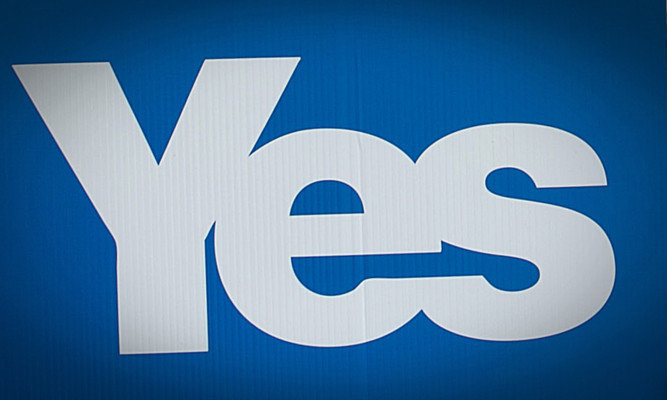A majority of Scots would back independence if the UK votes to leave the European Union (EU), a new poll has found.
The Ipsos MORI for STV News poll suggests Brexit would increase support for a Yes vote in the event of a second independence referendum.
It found Scots are strongly in favour of remaining in the EU, with 62% stating they would vote to remain, 26% who would vote to leave and 12% who are not sure.
A vote for Britain to leave the EU against the wishes of the majority of Scots is seen as a possible trigger for a second independence ballot.
The poll, conducted between February 1 and 7, suggests that if this were to happen, then opinion would be more in favour of Scotland becoming independent than it is now.
Asked how they would vote if there was another independence referendum tomorrow, 49% of the poll’s 1,000 respondents would vote yes, 45% would vote no and 5% did not know. This becomes 52% for yes and 48% for no when “don’t knows” are excluded.
More than half (54%) said they would vote yes in a second independence referendum if Britain voted to leave the EU when voters in Scotland voted to remain, compared to 39% who would vote no and 7% who were unsure. This becomes 58% for yes and 42% for no when “don’t knows” are excluded.
Meanwhile, the SNP remains on course for victory in May’s Scottish elections.
Among those likely to vote, 53% would cast their constituency vote for the SNP while 20% would vote for Scottish Labour. Support for the Scottish Conservatives stands at 16% with the Scottish Liberal Democrats on 6%.
Just under half (49%) said they would cast their regional vote for the SNP while Labour remain on 19%. The Scottish Conservatives stand at 15% while the Scottish Liberal Democrats are on 8% and the Scottish Greens on 6%.
Mark Diffley, director at Ipsos MORI Scotland, said: “Our latest STV poll confirms the strong position of the SNP.
“By this time in the run-up to the 2011 Holyrood election, we saw signs of shift in support from Labour to the SNP; there are no signs of a shift back in that support this time.
“The most striking finding from the poll is the potential support for independence in the event of a second referendum being called if Britain exits the EU against the will of the majority of voters in Scotland.”
A Scottish Labour spokesman said: “We will go into this election with a bold plan to give everybody in Scotland a fair chance in life, so we can grow our economy and invest in the future.
“We are in no doubt about the scale of challenge but we are confident in our vision for Scotland.”
SNP business convener Derek Mackay said: “This is another very welcome poll showing people in Scotland are continuing to back the SNP’s record in government and our positive, ambitious vision for Scotland’s future – in contrast to a chaotic Labour Party which isn’t even regarded as a credible party of opposition, never mind a credible party of government.”
